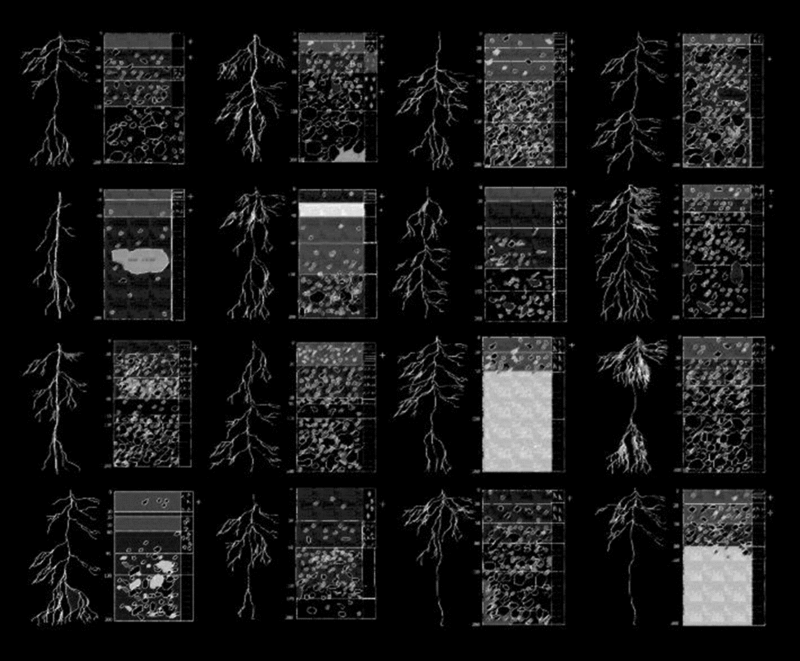Don Melchor Vineyard Parcels and Micro-Plots
Would you believe that the iconic Don Melchor Vineyard in Puente Alto used to be a polo field? It’s true. Part of it was also the Torcanal vineyard, first planted back in the 1880s to Bordeaux varieties. Vina Concha y Toro purchased the land that is now Don Melchor back in 1962 from the Chadwick family. They saw the potential. It was under the polo field. It was the soil. Sediment, rocks, clays and gravel were deposited over millennia by the meandering Maipo River; the Don Melchor vineyards now sits on the oldest terrace of a former channel of the Maipo River.
The vineyard was re-planted between 1972 and 1974, predominantly to Cabernet Sauvignon, but with small parcels of Cabernet Franc, Merlot and Petit Verdot. The vines used to replant the vineyard were taken from Massal selection cuttings coming from the original Concha y Toro vineyard, called Pirque Viejo, just South of Don Melchor, across the Maipo River.
The Don Melchor Vineyard is divided into seven distinct Cabernet Sauvignon parcels and 151 microplots. Let’s break them down:
- Parcel 1: This parcel is characterized by its presentation of intense, vivid and complex red fruit aromas. Its attack is sweet, with soft tannins, a silky texture and a long and elegant finish.
- Parcel 2: Vintages from this parcel present aromas of black fruit, tobacco, chocolate, spices and occasionally menthol notes. The high tannins bring a full-bodied texture in the mouth.
- Parcel 3: With an intense fruity character and notes of black and red fruits, wines from this parcel are dense in the mouth, with the contribution of firm tannins that give great structure.
- Parcel 4: Characterized by elegance and complexity, this parcel offers vintages with subtle but powerful notes of red fruit. There’s a good balance between acidity and tannins, as well as an extraordinary depth and density in the mouth.
- Parcel 5: The expression of this parcel is fruity, with notes of spices and graphite. The attack is smooth and evolves into a fresh and balanced aroma, with a mesh of delicate tannins that integrate seamlessly.
- Parcel 6: With a good fruit expression, intense and complex, wines from this parcel begin with volume and density, providing great structure and persistence on the palate.
- Parcel 7: This parcel impresses with its aromas of wild fruit and berries, as well as floral and spice notes. With fine and delicate tannins, there is great complexity and roundness in the final result.
The diversity of Don Melchor’s Cabernet Sauvignon is unparalleled. Decades of massal selection Cabernet Sauvignon clones evolving in the vineyard have led to this depth and thus have allowed Don Melchor to pull fruit from its parcels based on what each vintages provides. The vineyard is not looking for homogeneity in its vines, its strength and complexity is rooted in the diverse selection of clones and soils of each parcel.
In addition to the vast diversity of Cabernet Sauvignon clones, the complex array of soils throughout the vineyard is the other major factor that contributed not only to development of this vineyard, but also to its revered status as a world renowned Cabernet Sauvignon terroir. Puente Alto is a mosaic of Andean soils, comprised of clay-sand to sandy -clay and loam that are mostly porous and divided into 5 to 6 well defined layers with significant presence of rocks, large river stones, gravels and pebbles, including some calcium carbonate mixed in the first 1-2 feet. These are the soils of Bordeaux, but in our case, they are located at 2,200 feet in the foothills of the Andes mountains. As evidenced and illustrated by the soil profiles below, the vine’s root system varies according to the presence of stones and clay – sand. These are actual soil profiles derived from trenches or calicatas dug through the Don Melchor vineyard.

